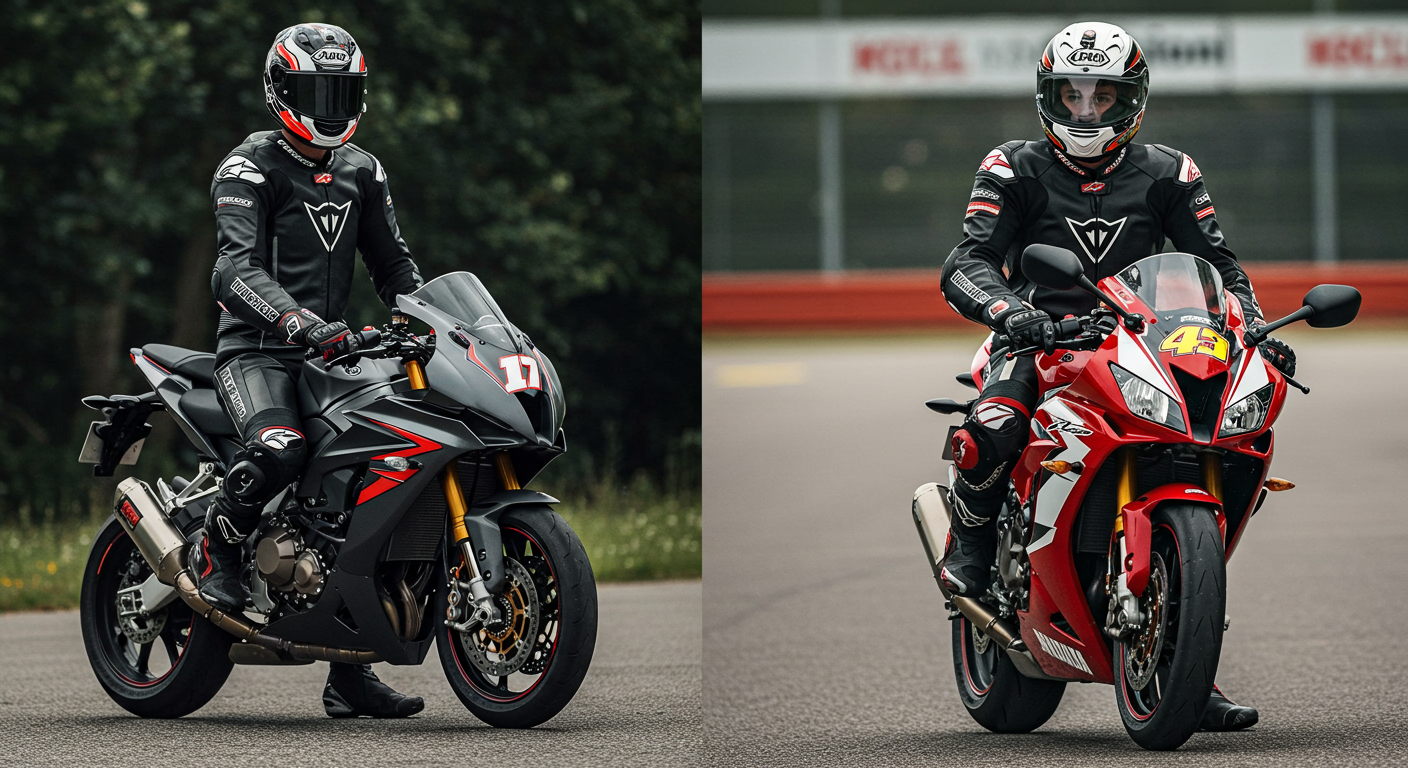Introduction: More Than Just a Look
Motorcycle Leather Gear go together like asphalt and adrenaline. But what’s the real story behind the enduring love affair with leather riding gear? Is it all about protection, or is there something deeper—something more personal, maybe even… fetishist?

At GHC Sportswear, we explore the cultural roots, safety science, and emotional pull of motorcycle leather gear to uncover why bikers wear it, love it, and sometimes refuse to ride without it.
1. A History Sewn in Leather
Before it was iconic, leather was practical. As early as World War I, leather was the go-to material for fighter pilots due to its durability and protection from wind. When motorcycling took off in the 20th century, riders adopted the same principles.
By the 1950’s, movies like The Wild One turned leather into rebellion. Think Marlon Brando, slick jackets, and the open road.
Why leather became the default:
- Abrasion resistance
- Wind and weather protection
- Tough, edgy aesthetic
2. Motorcycle Leather Gear as Safety Armour
Modern motorcycle leather isn’t just about looks. It’s engineered for performance:
- Reinforced stitching
- CE-rated armour at impact zones
- Slide resistance up to 100 feet
Compare that to denim or synthetics, and you’ll understand why leather remains the premium option for riders who prioritize safety.
Yet many still ask: Is it worth the weight, cost, and heat?
3. Is It Just a Style Statement?
The short answer? No—but also, kind of yes.
Motorcycle culture is steeped in visual identity. Black leather symbolizes:
- Rebellion
- Toughness
- Unity in riding groups
Over time, leather gear evolved beyond function into a uniform—one that speaks louder than words at any biker bar or café meetup.
Leather = Belonging
Whether it’s vintage café racers or aggressive street riders, leather gear tells the world: I’m one of them.
4. The Fetish Angle: Myth or Reality?
Let’s talk about the elephant in the room. Leather has long had links to fetish culture. But does wearing it for riding tap into that?
Quick reality check:
- Most riders wear leather for utility and tradition.
- Any sensual or aesthetic appeal is often secondary.
- Fetishism and gear passion are two different things—but outsiders often blur the lines.
In truth, the leather fetish stereotype often says more about society’s view of bikers than bikers themselves.
5. The Psychology of Leather Gear
Why are some riders almost emotionally *attached* to their leather gear?
Key reasons:
- Confidence boost: Leather feels powerful.
- Routine and ritual: Like a uniform, putting it on “switches on” ride mode.
- Sensory experience: The smell, the texture, the weight—it’s grounding.
This makes leather not just gear, but a mindset trigger for riders.
6. Custom Leather Culture
Off-the-rack gear? Not for everyone.
High-end riders commission:
- Custom-stitched jackets
- Personalized race suits
- Embossed logos and club patches
This creates a subculture where leather is an art form and a statement of individuality within the riding world of Motorcycle Leather Gear.
7. Motorcycle Leather Gear vs. Modern Textiles
So what about textile gear?
Pros:
- Lighter
- More breathable
- Often waterproof
But:
- Less abrasion-resistant in many cases
- Doesn’t carry the same cultural weight
- Still seen as “new school” by traditionalists
Some bikers switch to textiles for summer but return to leather when it really matters—speed, long rides, or group rides.
8. Gender, Leather, and Perception
Leather gear carries different connotations for people of all genders riders.
- Men: Often seen as armor, strength, defiance
- Women: Can be empowering but also over-sexualized by the public
Brands like GHC Sportswear are working to close that gap by designing gear that’s both performance-oriented and body-conscious—without feeding into tired stereotypes.
9. The Ritual of Suiting Up
For many riders, the act of suiting up in leather is sacred. It’s:
- A transition from daily life to biker life
- A mental prep for the risks of the road
- A way to feel *complete* before rolling out
This ritual aspect explains why even when not required, riders often choose leather over lighter options.
10. Leather Care is a Lifestyle
Leather isn’t just gear—it’s a responsibility.
Proper maintenance includes:
- Regular cleaning with leather-safe products
- Conditioning to prevent cracking
- Storing in ventilated, dry spaces
A rider’s jacket tells a story. Scuffs, patches, worn creases—they’re a timeline of rides, falls, and freedom.
Conclusion: Is It a Fetish or Just Passion?
Let’s set the record straight: Motorcycle leather gear is about tradition, protection, identity, and yes, passion.
At GHC Sportswear, we say this proudly:
“It’s not a fetish—it’s a lifestyle.”
Whether you ride in full race leathers or vintage café cuts, leather gear isn’t just clothing. It’s a culture. And every scratch tells a story.
